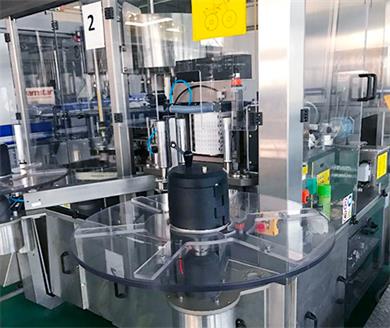The Internet of things is booming RFID applications usher in new opportunities for development
The researcher of xinsi industry pointed out that from the perspective of the whole industry situation, the booming development of the Internet of things will certainly bring a lot of opportunities for RFID application. In 2016, the market scale of RFID in China reached 54.27 billion yuan.
Brush code entry, brush face entry, brush palm vein entry, scan code payment, IC tag +RFID(radio frequency identification) payment, user behavior analysis payment and so on, behind the unmanned store is a strong material and technology support - RFID technology.
For the whole Internet industry, RFID is one of the important technologies in many data acquisition methods, through the actual project and RFID technology needs to reflect, and with the Internet, big data, combined with artificial intelligence and cloud computing, after the application of unmanned hypermarket, no retail a new round of RFID technology innovation and application.
At present, unattended retail stores can be roughly divided into two schools in terms of technology. AmazonGo, taobee and takego are the leading edge schools, all of which use hot cutting-edge technologies, such as machine vision, deep learning algorithm, sensor fusion technology, convolutional neural network and biometrics. RFID, represented by bingobox, 7-11 and rosen's unmanned shop in Japan, is more advantageous in the identification and anti-theft of goods, and more mature in technology.
According to the "2018-2022 China RFID industry market depth research and investment prospect forecast analysis report" released by xinsijie industry research center, the difference between RFID and traditional bar code is that RFID relies on the electromagnetic signal transmitted by radio frequency in the process of work, and the terminal identifies the digital electrical signal converted to the baseband by radio frequency. The traditional barcode transmission process mainly relies on the optical signal related to the image, and the terminal is to obtain the digital electrical signal through the photoelectric conversion equipment.
RFID is a technology suitable for the application in the commodity packaging of unmanned stores at present. However, it also has the disadvantages of high cost, so it is more suitable for high-value commodities. If the cost of RFID chips is reduced in the future, the cheap commodities can also be adopted, and RFID applications will be more extensive.
However, RFID electronic tag application also has limitations, RFID non-affinity medium is more, can not be applied to metal, liquid, aluminum foil packaging, encounter liquid because of absorption and misreading serious, in addition, RFID is easily shielded, label adhesive trouble, easy to be torn, size and induction distance are not easy to coordinate.
The researcher of xinsi industry pointed out that from the perspective of the whole industry situation, the booming development of the Internet of things will certainly bring a lot of opportunities for RFID application. In 2016, the market scale of RFID in China reached 54.27 billion yuan. But the high cost of RFID is still a big obstacle to the application, the good news is that no one retail is becoming a tuyere application of RFID, and supermarkets, and convenience stores, no refrigerator, no container, whatever the form of success will bring a high growth opportunities for RFID, but its powerful rival AI image recognition remains to be mature in technology.
- Impinj unlocks new IoT device opportunities with launch advanced RAIN RFID chips
- RFID is Improving the World of Healthcare
- Confidex Ferrowave Micro Delivers On-Metal RFID Tracking for Specialty Retail
- Paragon ID announces the acquisition of Security Label, European leader and one of the world's bigge















